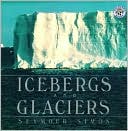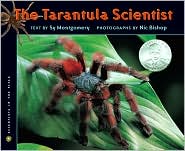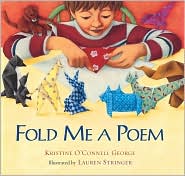
1. Bibliography:
Simon, Seymour. 1987. Icebergs and Glaciers. New York: William Morrow and Company, Inc. ISBN: 0688061869
2. Summary:
In this book, Seymour Simon begins with a simple snowflake and ends up with a glacier. Through simple paragraphs and detailed pictures, the reader discovers how a snowflake is one crystal that when joined together with many other snowflakes can create snow, which creates ice, which forms blocks of ice known as glaciers. After learning about the formation, the reader then finds out what happens with a glacier's movement, type, changes.
3. Analysis:
The book is twenty years old. In the last twenty years, much news has been made about global warming and the melting of ice caps and glaciers around the globe. With this new trend, a book written twenty years ago is outdated and archaic. However, this does not render the book totally useless. Its easily understandable text makes the book a great explanation for how glaciers are formed while Its simple sentences like "All glaciers move in both ways" are short sentences designed to keep scientific (and often complex) ideas simple for early students to not only read but also understand.
The pictures are vivid for the 1980s, but today's children are used to bolder and clearer pictures with the technology we have today. However, the choice of keeping the background all white adds to the glacier look as do the block letters, which give the feel of the blocks of ice.
Overall, while the book is clear, well-written, and informative ,the information presented is just outdated. In fact, I checked this book out from the library where I teach, and it's interesting to note that the book has only been checked out twice since 1990 according to the stamps in the back of the book. One of these dates in the last 17 years is the date when I checked it out! Perhaps this is a book that could be revised with today's facts and pictures from our new technology.
4. Reviews:
School Library Journal: "This one would almost be worth adding to collections for the spectacular illustrations alone, but Simon's lively and informative text makes the book even more impressive." Jonathan Betz-Zall, Sno-Isle Regional Library System, Marysville, Wash.
5. Connections:
Because of the book's age, I don't know if it would be currently useful. However, if a class was discussing global warming and glaciers today, it would be interesting to compare it to the knowledge shared in this book to see how things have changed in twenty years.



